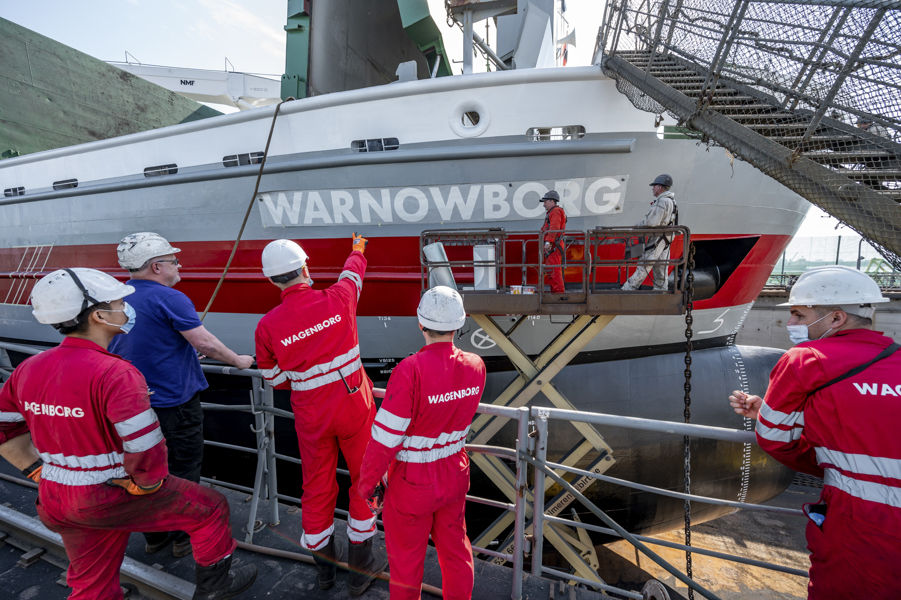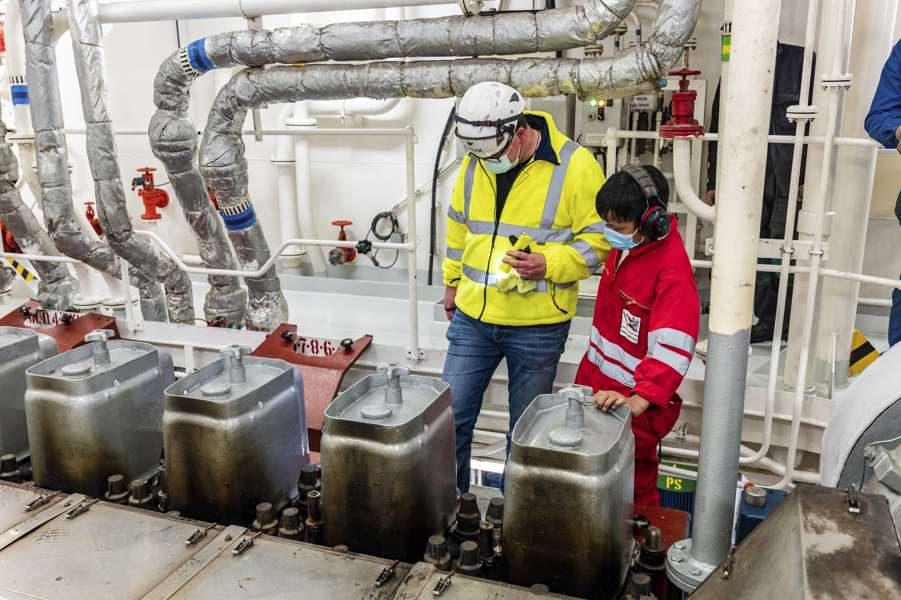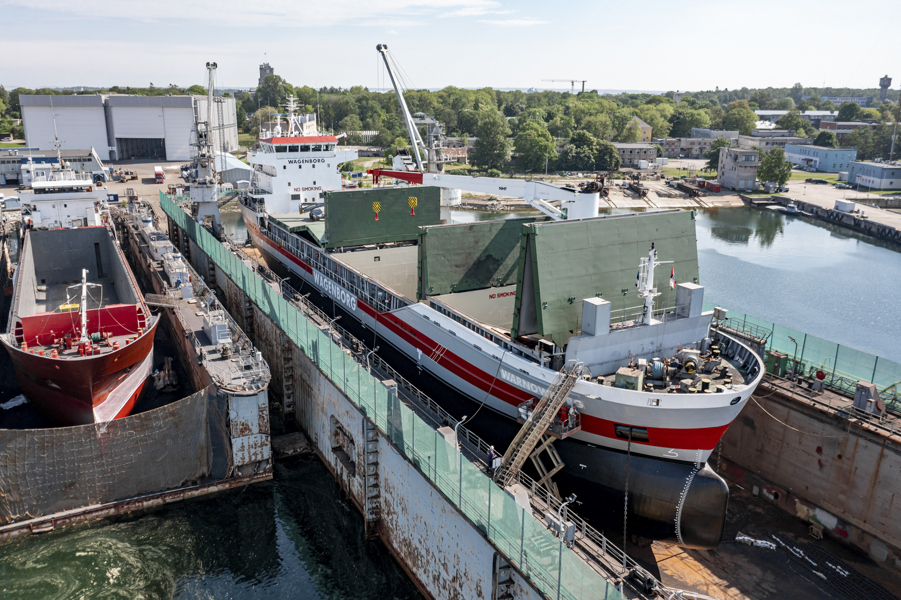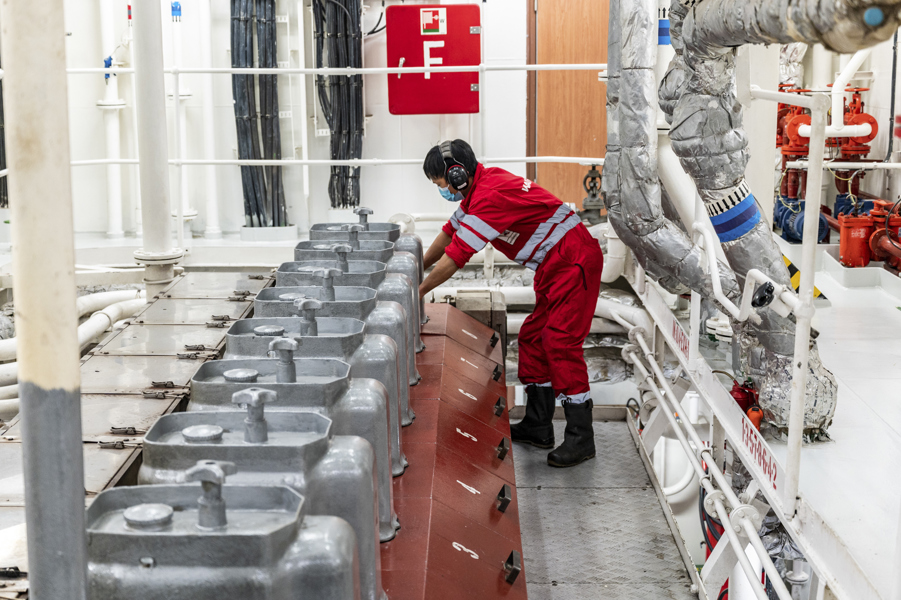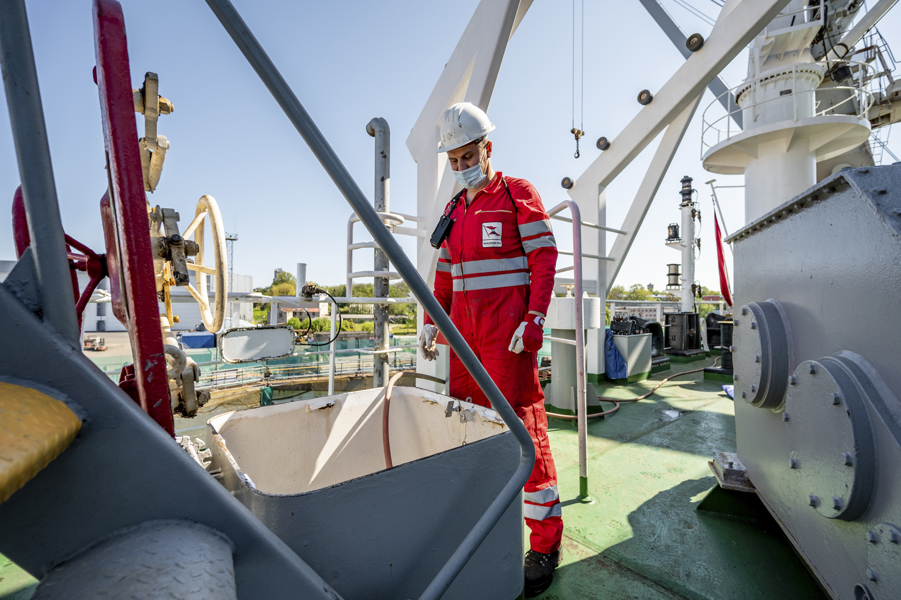
‘Green’ updates for m.v. Warnowborg during docking period
Maintenance and modifications of existing vessels
Our ships are built to last 25- 30 years, but in today’s world that raises complicated questions. It’s the biggest dilemma in shipping. The question is: how do we prepare our ships for such a long period of service? Vessel inventory validated an economic lifetime of our fleet of at least 30 years. Innovations and modifications to our existing fleet do payout under this long lifetime given the relatively young age of our fleet (~14 years) and extend lifetime even further. With this in mind, the m.v. Warnowborg received various ‘green’ updates during her planned docking period for maintenance.
Ballast water treatment systems improves ocean health
First of all a ballast water treatment system was installed. With the installation of this system, the Warnowborg meets the international rules and regulations as described in the International Maritime Organization’s Ballast Water Management Convention to improve ocean health. Sounds simple, but it is quite a job to fit and position the system and pipes in the engine room.

Biodegradable and non-toxic fluids
Second, various fluids of multiple systems were replaced by biodegradable and non-toxic alternatives. For instance, for the cooling installations, the refrigerant was changed by a less harmless alternative for the ozone layer. In addition, the Warnowborg received bio oils, the vessel is equipped with a thermal anti fouling system instead of copper anodes, zinc anodes were changed for aluminum anodes and tbt free paints were applied. The ship is completely asbestos free and the IHM-manual (Inventory Hazardous Materials) was updated.
Polar code
The Warnowborg is also approved for polar operations, resulting in a Polar Certificate. The certificate confirms the vessel’s compliance with the requirements of the IMO Polar Code. The Polar Ship Certificate is mandatory for ships operating in polar water, starting from January 2018.
Deepening results in improved efficiency
Also affecting the efficiency of vessel is how much cargo vessels are able to carry. In this line, the entire W-class, including the Warnowborg, was deepened. This way these vessels are able to carry up to 10% more cargo while having the same fuel consumption.
All the additions above contribute to reducing the impact on the environment of Wagenborg and her clients.

